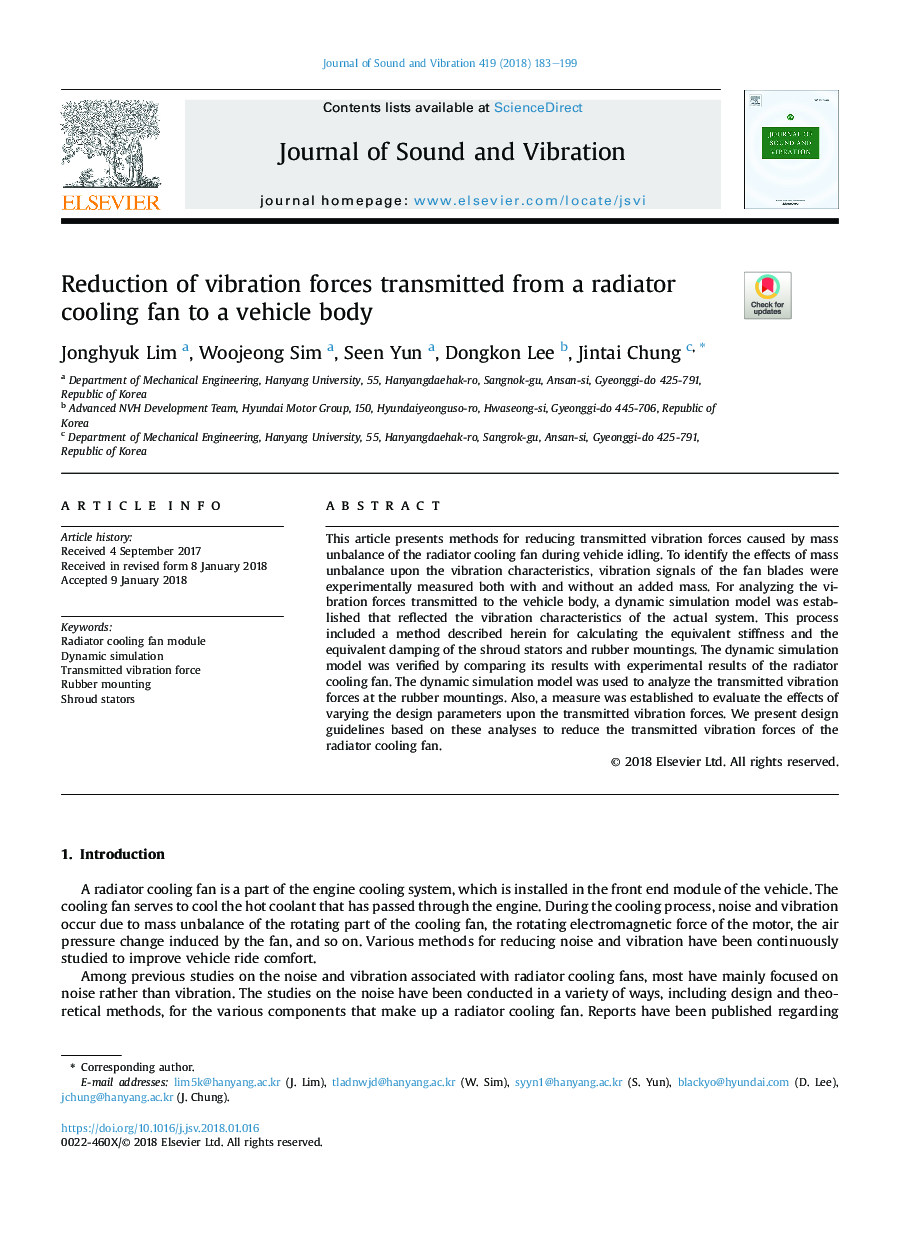| Article ID | Journal | Published Year | Pages | File Type |
|---|---|---|---|---|
| 6753580 | Journal of Sound and Vibration | 2018 | 17 Pages |
Abstract
This article presents methods for reducing transmitted vibration forces caused by mass unbalance of the radiator cooling fan during vehicle idling. To identify the effects of mass unbalance upon the vibration characteristics, vibration signals of the fan blades were experimentally measured both with and without an added mass. For analyzing the vibration forces transmitted to the vehicle body, a dynamic simulation model was established that reflected the vibration characteristics of the actual system. This process included a method described herein for calculating the equivalent stiffness and the equivalent damping of the shroud stators and rubber mountings. The dynamic simulation model was verified by comparing its results with experimental results of the radiator cooling fan. The dynamic simulation model was used to analyze the transmitted vibration forces at the rubber mountings. Also, a measure was established to evaluate the effects of varying the design parameters upon the transmitted vibration forces. We present design guidelines based on these analyses to reduce the transmitted vibration forces of the radiator cooling fan.
Keywords
Related Topics
Physical Sciences and Engineering
Engineering
Civil and Structural Engineering
Authors
Jonghyuk Lim, Woojeong Sim, Seen Yun, Dongkon Lee, Jintai Chung,
